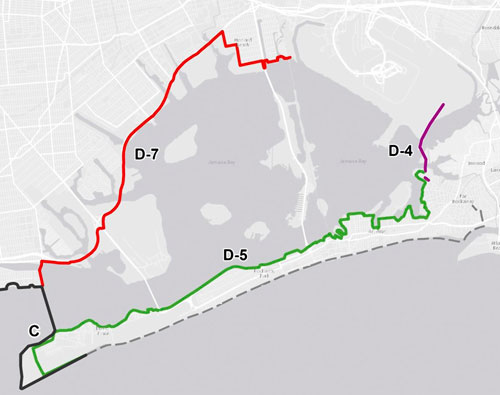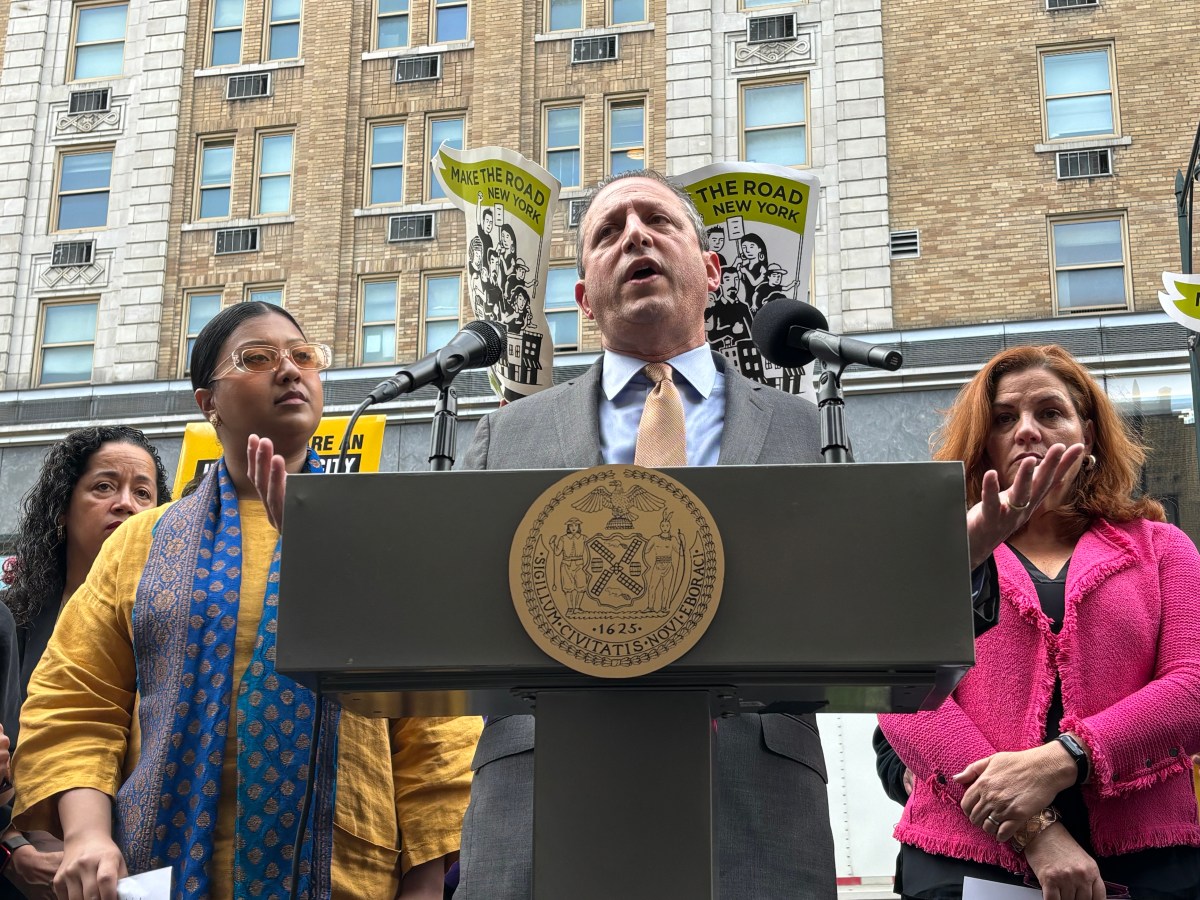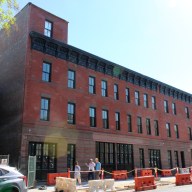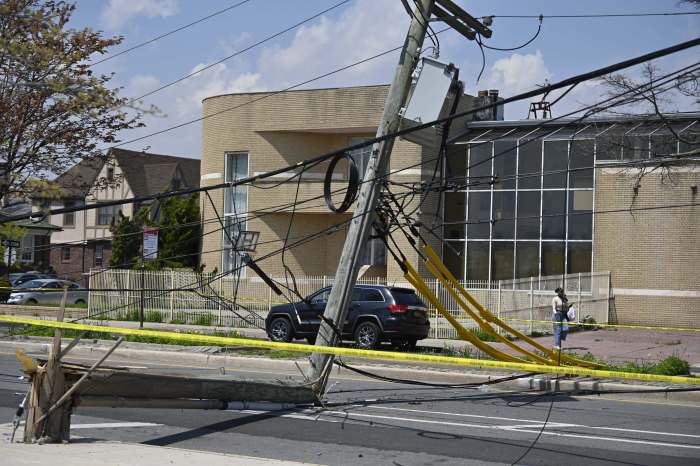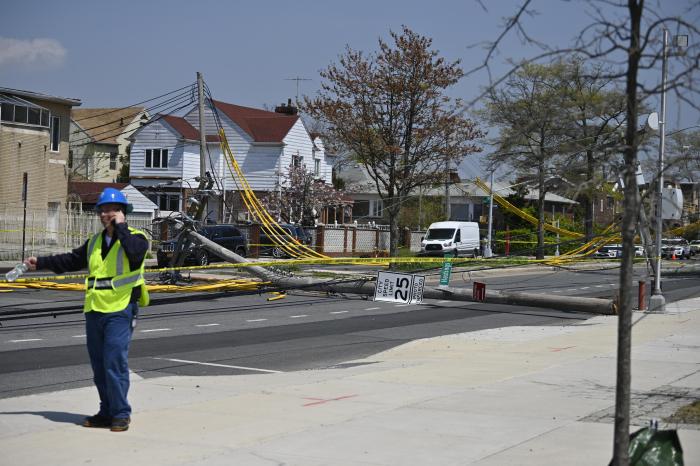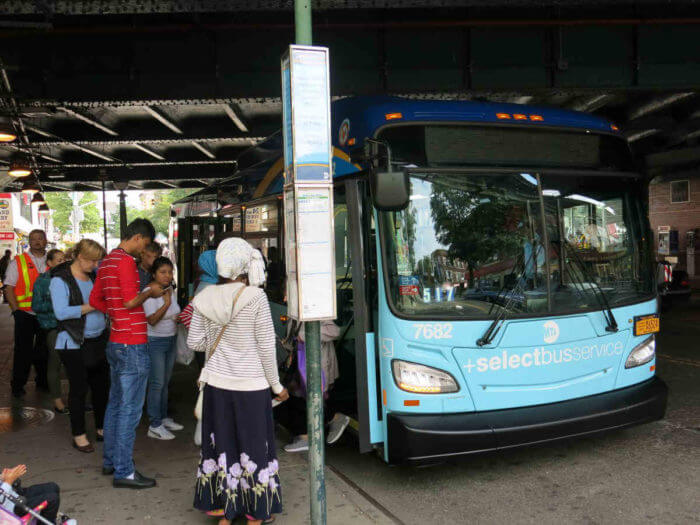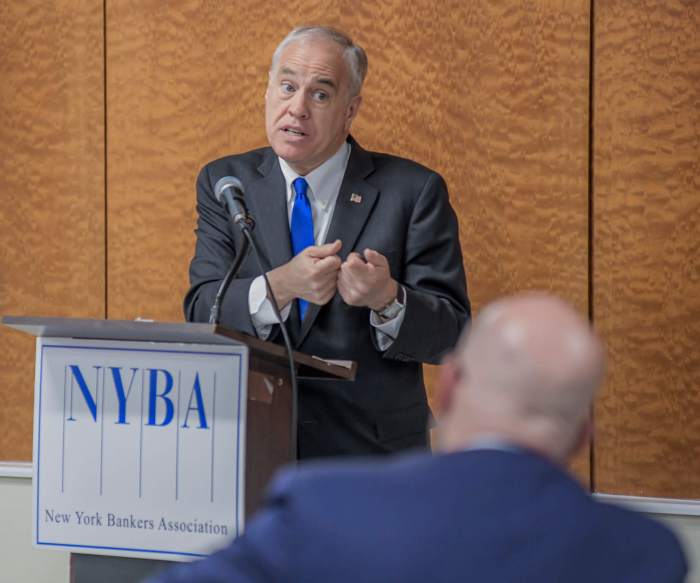The U.S. Army Corps of Engineers is trying to decide between two different flood-prevention plans to protect the neighborhoods around Jamaica Bay from future storm surges like the one that overwhelmed the area during Hurricane Sandy, and it came to Manhattan Beach on May 27 to get some advice from the locals.
The corps presented the competing proposals at a town hall convened by local electeds and the Manhattan Beach Community Group PS 195 in Manhattan Beach. It was seeking public input before it selects one of the options by late September.
One plan would build a large tidal surge barrier across the mouth of Jamaica Bay, extending from Manhattan Beach near Kingsborough Community College to Breezy Point in the Rockaways, where it would join a planned fortification of the seaward side of the peninsula to protect the entire inlet. The barrier would include a large gate at the mouth of the inlet that would remain open except when anticipating a storm surge.
The alternative, called the perimeter plan, would involve smaller seawalls and gates constructed around the waterfront of Jamaica Bay that could also open or close in case of a storm threat.
Once a plan is selected, the corps will still need the approval of both the city and the state in order to move forward, and any impacts on the environment or on the quality of life for residents will have to be studied before any work begins. Once the project gets the green light, the corps hopes to complete whichever barrier is chosen by 2018.
“Ideally we’d have narrowed it down to one way forward for the Rockaways and one for the Back Bay, but ultimately it would require further analysis,” said Christopher Gardner, a spokesman for the corps. “We need to figure out which is the most cost-effective as well as the most environmentally safe.”
Cost-effectiveness is a concern for many Southern Brooklyn homeowners faced with a massive hike in flood-insurance rates due to the post-superstorm expansion of flood zones by the Federal Emergency Management Agency, which oversees the publicly subsidized flood-insurance program.
Flood insurance was also on the agenda of the town hall, which was hosed by Rep. Hakeem Jeffries (D–Brooklyn), Assemblyman Steven Cymborwitz (D–Sheepshead Bay), and Councilman Chaim Deutsch (D–Sheepshead Bay). Homeowners in the newly expanded flood zones have to pay much higher premiums or take drastic measures to mitigate flood risk, such as raising their entire houses up to 12 feet.
Representatives from advocacy group Neighborhood Housing Services expressed hope that the new flood-prevention infrastructure to be built by the corps will be taken into account as new flood zones go into effect.
“The question that has yet to be answered is: will the National Flood Insurance Program accept these measures as reducing the flood risk so that they can reduce the rates,” said Elizabeth Malone, program director for Neighborhood Housing Services. “We’re looking at making the decision about a great deal of money and a great deal of work and a great deal of change to our coastal neighborhoods, and we want to be sure that money is spent in a way that will benefit the current residents.”


